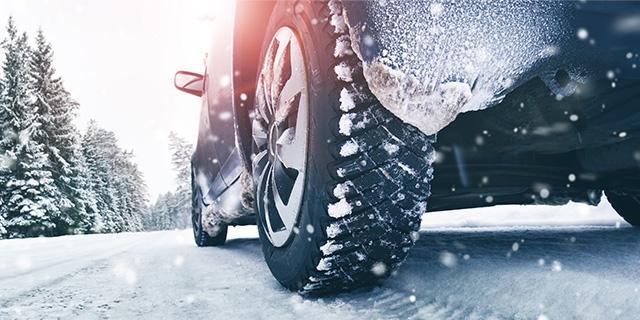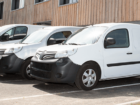Snow, rain, ice, fog, sleet – all can catch out the unprepared driver. Here are our tips on staying safe while driving in the winter.
With the winter months come long nights, bad weather – and even more temptation to drive everywhere so you can stay warm and wrapped up in the heated sanctuary of your car.
But driving in snow, in the rain or just when it’s really cold outside can present a unique set of risks that you need to take into account if you want to avoid a serious accident.
We’ve rounded up some winter driving tips below to help you stay safe.
Do you need to drive at all?
This is the first and most important question to ask yourself – when inclement weather moves in, it’s best to simply batten down the hatches and avoid driving at all.
This obviously doesn’t apply to a light shower. But if the roads are covered in snow and ice then we really recommend just staying home. Remember, even if you’re the best driver in the world, you have to share the road with many others who may be ill-prepared – and a crash is a crash no matter who’s to blame!
If you have to drive, try going when the roads are quieter. And in the afternoon, the sun will have had more of a chance to melt any ice on the roads, making their surface less slippery.
How do I drive in the snow?
The first thing to do is to prepare your car. De-ice the windscreen and clear off any accumulated snow, especially from the headlights and taillights. Don’t leave your car running unless you’re remaining with it. Idling vehicles in winter are a great target for thieves, and if they take advantage your insurance is unlikely to cover you. It’s also illegal to leave a running vehicle unattended. Take a look at 13 surprising ways you could be invalidating your car insurance!
Plan your journey carefully, sticking to main roads which are more likely to have been cleared and gritted. You can find out which roads your local council will grit on the Gov.uk website.
Driving when there’s snow on the roads requires a lot of care and caution to be taken at all times. That’s because, while fresh snow isn’t actually that dangerous, it can quickly compact and harden into a slippery, icy surface.
That means the safest way to drive on snow is to treat the roads as if you could lose grip at any time. Drive slowly, leaving at least twice as much distance to the car in front as you usually would to account for a greater stopping distance. And remember, even a road that looks clear may be covered in black ice – nearly-invisible, totally frictionless, and very dangerous.
Try not to make any sudden movements with the car. Accelerate, brake and steer gently, otherwise you’re at risk of losing grip and sliding. This is especially true of rear-wheel-drive cars in the snow, which are more liable to lose grip and spin.
If you have a manual car, drive one gear higher than you normally would and pull off in second gear – and when slowing down, avoid pressing the clutch until the very last moment to make use of gentle engine braking.
If you’re in an automatic, check through your owner’s manual – many have a ‘winter’ mode which changes the gearshift points to accomplish the same effect.
What else should I look out for?
Other tips for driving in snow are to pay attention closely to the environment. As the day goes on and ice melts from the roads, it’s important to remember some of it can still be hiding – often in areas that don’t see a lot of sun, such as underneath bridges or in the shade of buildings.
If it’s still snowing, consider how visible you are to other drivers – turn on your dipped headlights, and use your fog lights if visibility is really bad.
Remember to plan ahead for hills and make sure you’re in the right gear so you don’t have to change on the slope.
What should I keep with me in the car?
It’s worth making up a little winter kit to keep in your boot during the icy months. We’d recommend including:
- Ice scraper and de-icer
- Fully charged mobile phone
- Sunglasses – snow can be bright and glaring
- Hazard warning triangle
- Tow rope
- First aid kit
- Jump leads – cold weather can affect your car’s battery
- Spare bulbs
- Torch
- Warm clothing
- High-energy snacks, such as cereal bars and water
- A snow shovel – you can buy compact folding units
A motor factor such as Halfords will sell most of what you need, and often does so in useful little kits complete with carry cases.
Do I need snow tyres?
Realistically, snow is such a rare occurrence in the UK that dedicated snow tyres are something you don’t need. If you live further north or in Scotland, however, you might consider investing in winter tyres or all-season tyres, which provide better performance not just on snow but on wet roads and in cold temperatures too.
Winter tyres work best in temperatures below 7 degrees, as they’re made of a different rubber compound that stays flexible in the cold – where summer tyres are liable to stiffen up and lose grip.
Their tread patterns are also designed to not clog up with snow and efficiently remove water.
Dedicated winter tyres should be swapped back to summer tyres when the weather warms back up, but all-season tyres can be left on all year round. This is because winter tyres tend to become too soft in warmer temperatures, leading to increased wear and fuel consumption. Summer tyres provide more grip when the weather’s hot. You must ensure that your tyres are in good condition, see how you can look after your tyres here.
What do I need to know about driving in the rain?
Winter doesn’t just bring snow and ice – it can also bring heavy rain and flooding. Of course, this is equally hazardous in the autumn where wet leaves can make the roads as slippery as ice.
Driving in the rain can be hazardous, with wet and slippery roads plus spray reducing visibility. It’s therefore essential you take proper precautions.
Visibility is key – both seeing and being seen. Our advice is ‘wipers on, lights on’ – once it starts raining, turn on your dipped headlights. Don’t rely on automatic headlights, which may not respond to the level of ambient light, or on daytime running lights which may not illuminate at the rear of the car.
Remember, a dark coloured car in the spray on a motorway will become almost invisible if not illuminated.
Check your wiper blades, tyres and bulbs regularly so you’re not caught out – and make sure your windscreen washer fluid is topped up so you can efficiently clear your windscreen.
What if I drive through standing water?
If you come across a flooded road, proceed with extreme caution. Modern cars are not designed to drive in deep water and you could easily flood your engine or electrics, effectively writing the car off.
Do not drive through standing water unless you know how deep it is. And don’t think that just because you drive an SUV you’ll be safe – most modern 4x4s are barely any better than a regular hatchback for wading!
If you’re not sure, then find another route – it’s simply not worth the risk.
If you do, then proceed slowly – driving fast on wet roads can lead to aquaplaning, where the car’s tyres skate across the surface of the water and lose contact with the road. However, if this happens, resist the temptation to brake or steer, and instead let off the accelerator and allow your speed to reduce until your grip returns.
If you have an accident in winter…
As with any time of year, try and make sure you and your car are in a safe place – the side of the road, the hard shoulder, or a layby, with your hazard warning triangle out at least 45 metres behind your car and with your hazard lights flashing.
If you’re immobilised on the hard shoulder of a motorway resist the urge to stay in the car as this is the most dangerous place to be. It’s vital to pack enough warm clothing that you can exit the vehicle and still stay warm.
Don’t leave your bonnet open if it’s raining or snowing, as you risk flooding the car’s electrics.
And as always, make sure your insurance covers you properly – it’s especially useful to have breakdown cover included for moments just like these. You can shop around for the best policy right here on mustard.co.uk.








